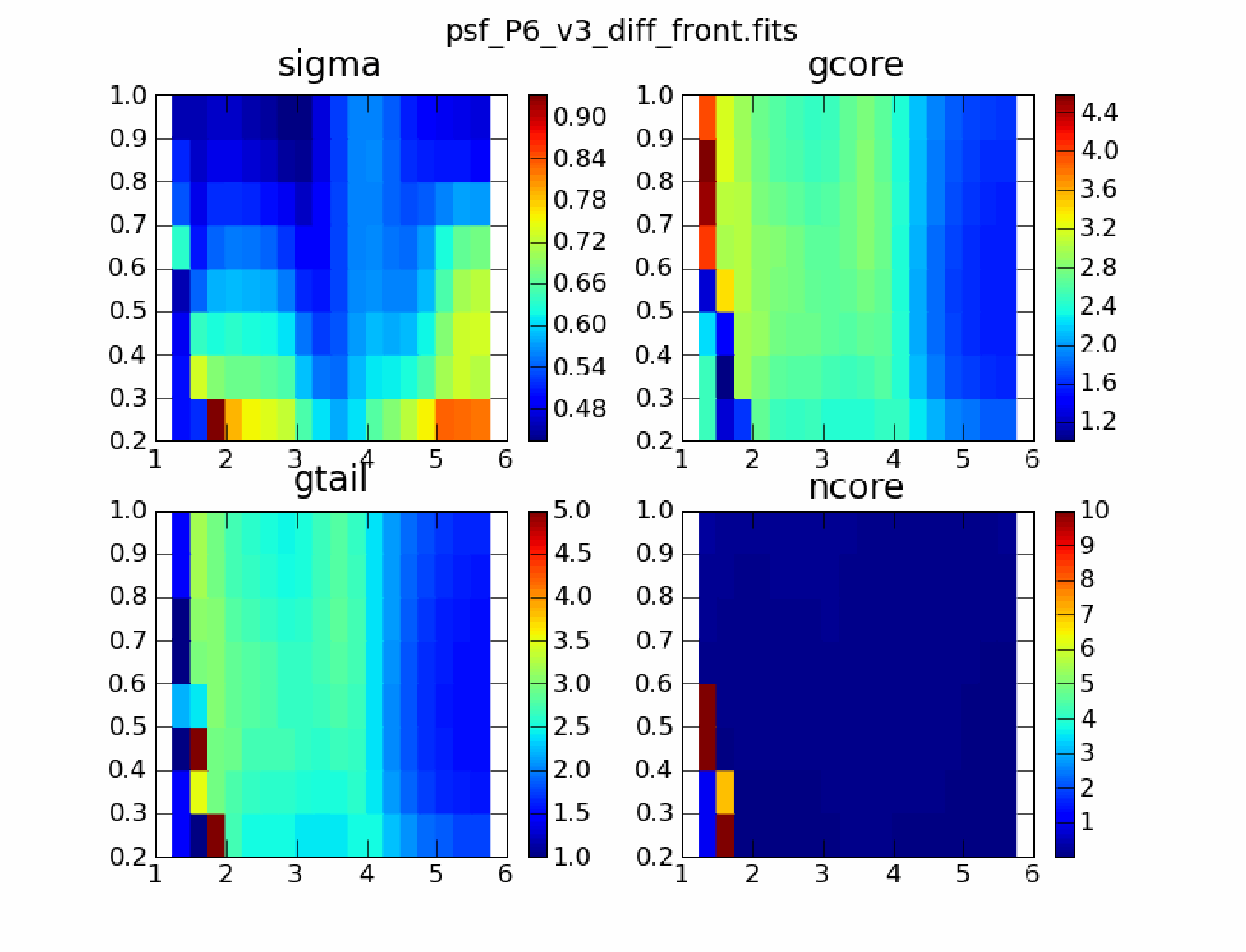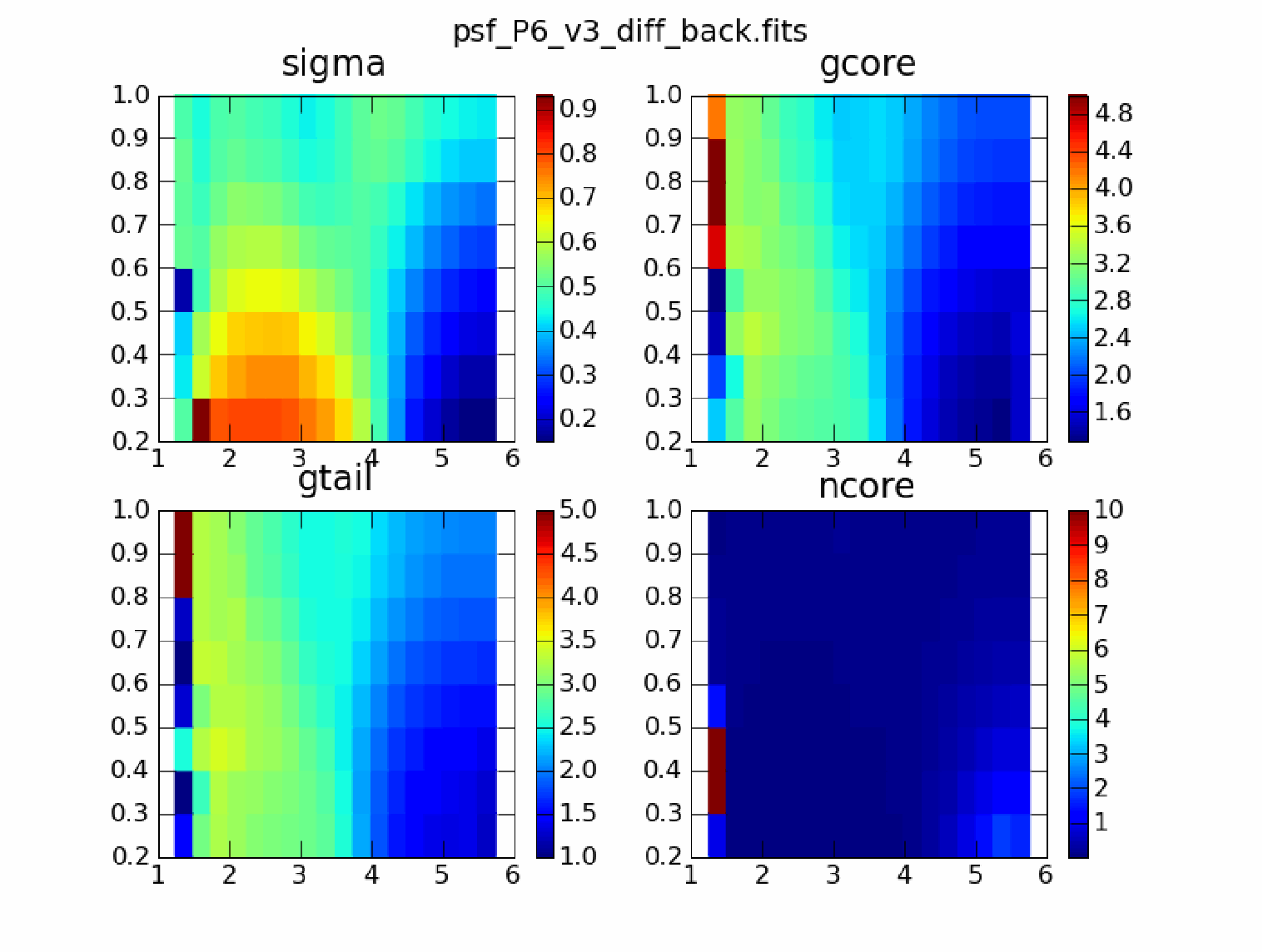The Point Spread Function (PSF)
The point spread function for the LAT is a function of an incident photon's energy and inclination angle, and the event class.
Default binning is 4 energy bins per decade, from 1.25 to 5.75 in logarithmic MonteCarlo energy, 8 angle bins, equally spaced from 0.2 to 1.0 in cos(θMC). For each bin, the scaled angular deviation is calculated as described below. First, we define

where d is the difference between the true direction X and the reconstructed one Y, while φ and θ are the corresponding local unit vectors in increasing θ and φ polar directions, as calculated in the point indicated by X. Thus the numerator is simply the magnitude of the deviation (Y-X), assuming a small angle approximation where sin(a)=a. The vector calculation accounts approximately for the fact that psf is not azimuthally symmetric about the true direction.
If E is expressed in MeV, we let

Parameters c0 and c1 have distinct values for front and back: converting events.
| c0 | c1 | |
|---|---|---|
| front | 58e-3 | 377e-6 |
| back | 96e-3 | 1300e-6 |
The functional form of the analytical description of the LAT's Point Spread Function is derived and adapted from XMM's. The function is:

To allow for a tail in the distribution a different gamma is used to fit the core and the tails of the distribution:
![]()
NTAIL is calculated form the other parameters, therefore the only parameters requiring to be saved in CALDB are * NCORE * SIGMA * GCORE * GTAIL while
![]()
at xb=2*sqrt(5) x SIGMA.
Improvements for P6_V11
The Point Spread Function (psf) for the P6_V11 irfs is derived by the angular distribution of photons around bright point sources in LAT data at high energy. A dedicated paper describing in great detail the employed technique is being completed and will soon be available, a short summary follows.
At the lower end of the interval (above 1 GeV) the analysis is based on the Vela pulsar, on the higher end of the interval it is based on a stacking analysis of a suitable sample of bright AGNs.
Front and back converting photons are treated separately. At each energy the distribution of detected photons around the source position is parametrized, taking into account the background counts from other astrophysical sources and the true background hits. Containment levels are evaluated and the psf is described in terms of a simple psf_base function (see above) to match the observed containment. Where the two method overlap AGN data and pulsar data are in good agreement. Due to the statistical uncertainties a single function is used to describe the psf, i.e. there is no “tail” component; the derived parameters are smoothed within uncertainties to produce a smooth variation with energy also by tweaking the scaling parameters described above.
Any dependence on the psf on the theta angle, i.e. The inclination from the LAT boresight is at the moment ignored, so the estimate included in P6_V11 irfs is an average weighted over two years of mission.
Examples from P6_v3_diff
To illustrate the contents of the parameters as actually saved in the CALDB fits files, we show the plots for P6_v3_diff:


» Forward to Effective Area
» Back to the LAT IRF Overview
» Back to the beginning of the IRFs
» Back to the beginning of the Cicerone

